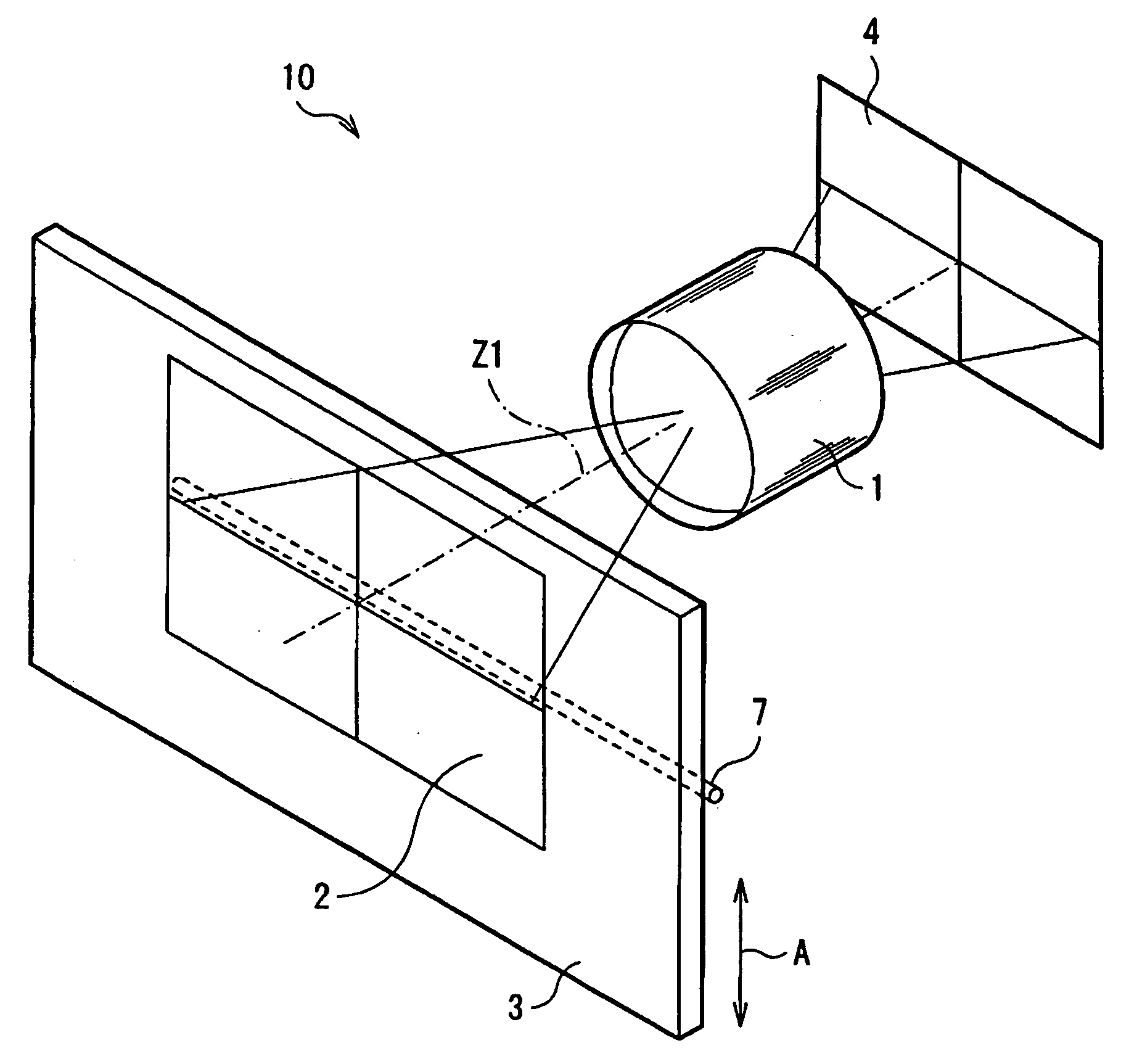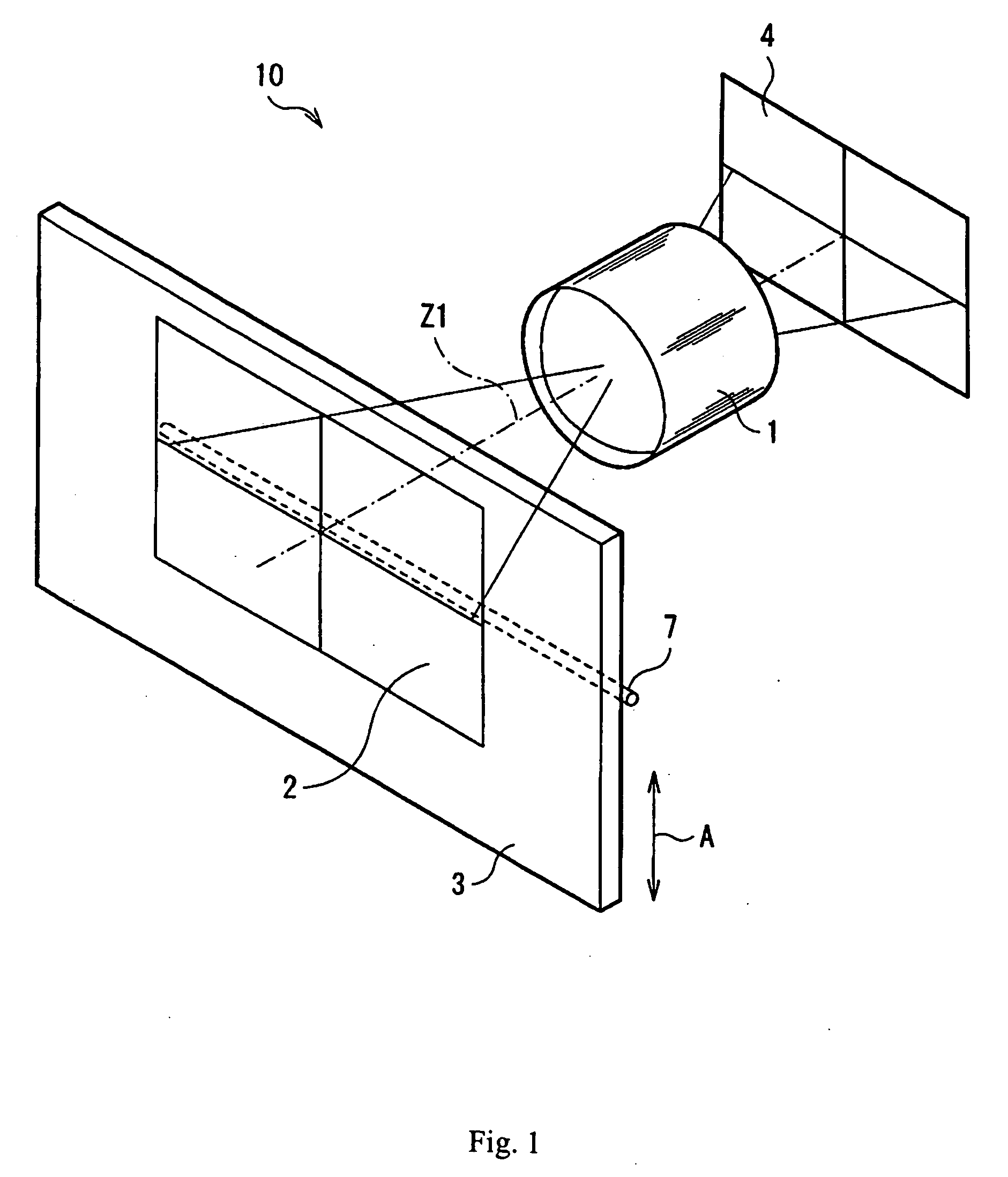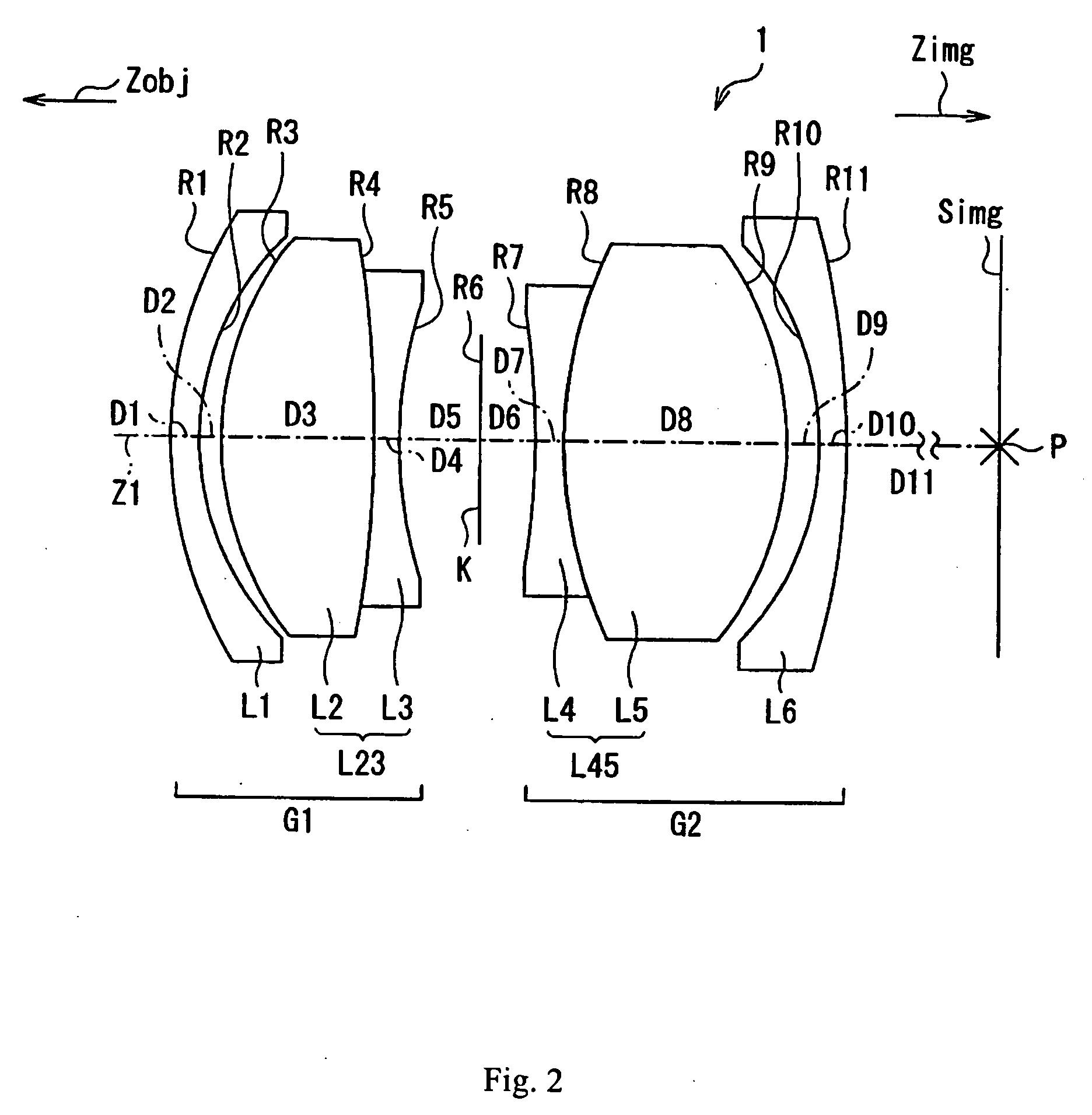Image scanning lens and image reader that uses same
- Summary
- Abstract
- Description
- Claims
- Application Information
AI Technical Summary
Benefits of technology
Problems solved by technology
Method used
Image
Examples
embodiment 1
[0049]FIG. 2 shows a cross-sectional view of Embodiment 1 of the image scanning lens of the present invention.
[0050] Table 1 below lists the surface number # in order from the object side, the radius of curvature R (in mm) of each surface, the on-axis surface spacing D (in mm), the refractive index Nd (at the d-line), the refractive index Ng (at the g-line), the refractive index NF (at the F-line), the refractive index NC (at the C-line), the refractive index N(850) (at 850 nm), and the product name that the manufacturer (OHARA) uses to identify the optical material used to make each lens element for Embodiment 1. Listed in the middle portion of Table 1 are the surface number # in order from the object side, the Abbe number νd (at the d-line), the partial dispersion ratio θg,d, the right side of Condition (6) above, and the right side of Condition (7) above for the optical material (other than air) on the image side of the given surface for Embodiment 1. Furthermore, listed in the ...
embodiment 2
[0053] Embodiment 2 of the image scanning lens of the present invention is very similar to Embodiment 1 and is well shown by FIG. 2 that shows a cross-sectional view of Embodiment 1 of the image scanning lens of the present invention.
[0054] Table 2 below lists the surface number # in order from the object side, the radius of curvature R (in mm) of each surface, the on-axis surface spacing D (in mm), the refractive index Nd (at the d-line), the refractive index Ng (at the g-line), the refractive index NF (at the F-line), the refractive index NC (at the C-line), the refractive index N(850) (at 850 nm), and the product name that the manufacturer (OHARA) uses to identify the optical material used to make each lens element for Embodiment 2. Listed in the middle portion of Table 2 are the surface number # in order from the object side, the Abbe number νd (at the d-line), the partial dispersion ratio θg,d, the right side of Condition (6) above, and the right side of Condition (7) above fo...
embodiment 3
[0057] Embodiment 3 of the image scanning lens of the present invention is very similar to Embodiment 1 and is well shown by FIG. 2 that shows a cross-sectional view of Embodiment 1 of the image scanning lens of the present invention.
[0058] Table 3 below lists the surface number # in order from the object side, the radius of curvature R (in mm) of each surface, the on-axis surface spacing D (in mm), the refractive index Nd (at the d-line), the refractive index Ng (at the g-line), the refractive index NF (at the F-line), the refractive index NC (at the C-line), the refractive index N(850) (at 850 nm), and the product name that the manufacturer (OHARA, except where labeled otherwise) uses to identify the optical material used to make each lens element for Embodiment 3. Listed in the middle portion of Table 3 are the surface number # in order from the object side, the Abbe number νd (at the d-line), the partial dispersion ratio θg,d, the right side of Condition (6) above, and the righ...
PUM
 Login to View More
Login to View More Abstract
Description
Claims
Application Information
 Login to View More
Login to View More - R&D
- Intellectual Property
- Life Sciences
- Materials
- Tech Scout
- Unparalleled Data Quality
- Higher Quality Content
- 60% Fewer Hallucinations
Browse by: Latest US Patents, China's latest patents, Technical Efficacy Thesaurus, Application Domain, Technology Topic, Popular Technical Reports.
© 2025 PatSnap. All rights reserved.Legal|Privacy policy|Modern Slavery Act Transparency Statement|Sitemap|About US| Contact US: help@patsnap.com



